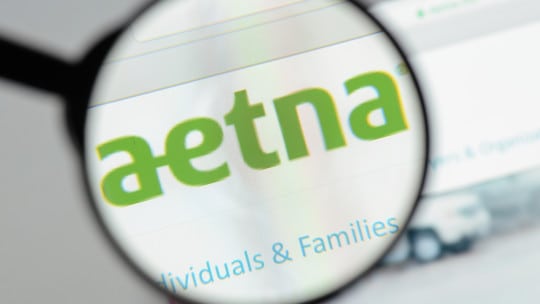
Why has it seemed like such a challenge for healthcare providers, pharmaceutical companies, insurers and nonprofit organizations to communicate effectively and build relationships on social media? One could argue that regulatory guidelines must be considered at every turn and have prompted communicators to proceed cautiously—especially given the serious nature and high stakes of the healthcare industry in the first place.

Kieran Fagan is familiar with the situation. He is vice president of communications at Aetna, responsible for digital communications and content strategy, and communications for Aetna International. At the upcoming Healthcare Social Media Summit Oct. 23 in Baltimore, he will be speaking on the session “The State of Healthcare Communications,” which will delve into the key issues that are now accelerating social media in healthcare communications. Fagan previews a few of them, from his point of view at Aetna:
Healthcare professionals being applauded for their passion to care about people, yet cited for not communicating with patients well enough: “On the one hand, I could cite examples of excellent communication from our associates with our members,” Fagan says, noting letters and testimonials indicate many one-on-one communications that have made a big and positive difference in people’s lives. “On the other hand,” he continues, “we know that we’re part of an overly complicated and broken system and could do a better job communicating with our members.”
He cites as an example of “complicated” communication the “indecipherable” Explanation of Benefits statements that everyone gets in the mail. “I’m a member, too, and I can’t figure them out,” he says.
Yet he feels the industry is working to get better. “The experience I have on our member website keeps getting better – easy access to information, quick responses to my questions about claims. More and more people are having a more positive digital experience, which is where we’re headed.”
The effect of high tech on communications in the healthcare field: Overall, Fagan feels the effect is positive. “Looking at digital communications, anything that helps simplify people’s interactions with the ‘system’ and get them the information they want or need is positive,” he says.
He used as an example being able to talk to your health insurance company via Twitter or the member portal and resolve an issue quickly. Other positives of high tech: being able to learn more about your diagnosed medical condition using “Dr. Google”; understanding potential treatment options and discussing them with your doctor via telemedicine portal; and connecting with other people in an online forum and share experiences and tips.
Today’s biggest challenges in meeting patients’ and customers’ evolving communications expectations: Fagan says he sees two primary challenges—one new and one old. “The new one is the ‘always on’ expectation that digital media feeds,” according to Fagan. “When people have a question, they want an answer now. When they have a problem, they want someone to solve it now. They don’t always expect an answer or solution now, but they want one. They don’t want to tap their way through an excruciatingly long phone menu or hunt through your website for an answer.”
The second challenge, he says, is an old communications challenge—communicating in normal, jargon-free language. “It still astounds me how many corporations shroud themselves in dense, wordy press releases full of impenetrable sentences and quotations no human would speak,” he laments. “We can learn a lot from social media about how real people talk—and would do well to mirror that to be a relevant voice in those conversations.”
Regulatory changes’ impact on healthcare communications: Aside from GDPR and its impact on sites doing business in Europe, Fagan believes there hasn’t been much recent regulatory change in the industry that’s affected his approach to social media. “A lot of the basics are unchanged, most covered under HIPAA’s social media rules and boiled down to: ‘respect patient privacy.’ Like any company, Aetna has clear social media guidelines, monitoring and reporting processes.”
Measuring the effect of your social media communications efforts: Fagan says Aetna has a monthly scorecard that measures overall media performance, with social media as part of that. The company measures a combination of factors: the effectiveness of social channels (are they maintaining or increasing engagement); the reach of the content (is what they have to say breaking through to audiences); and Aetna’s share of conversation among specific groups of online influencers (are the people who matter most on a topic talking about Aetna relative to that topic). He says Aetna includes in this the effectiveness of and engagement with the company’s senior leaders who are active in social media.
Tailoring different messages for different audiences in different social platforms: “For my work, it’s less about tailoring a message for a specific platform than having the right ‘messengers’ talking to the right audiences regardless of platform,” Fagan says. He noted that Aetna’s chief medical officer uses Twitter to talk to a more clinical audience – his network of peers, academic experts, clinical trade media, etc. Similarly, the president talks with customers via LinkedIn; the chief digital officer is talking to digital health leaders via Twitter, and so on. “They each have their distinct audiences, often on the same platforms,” he says. “We work with them to tailor the message to their audience, and use social media to keep up the conversation.”
Jim Alkon is a contributing writer for PR News and is currently Editorial Director of BookTrib.com, a website where readers discover emerging authors.
